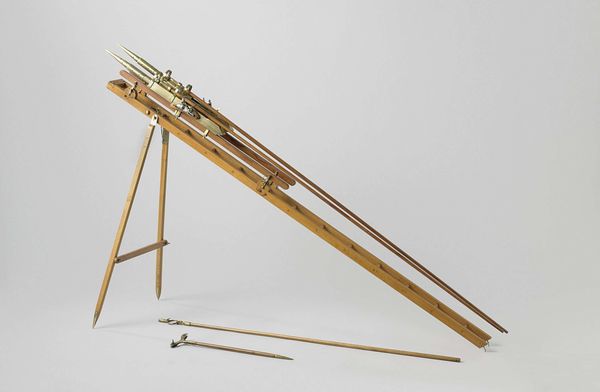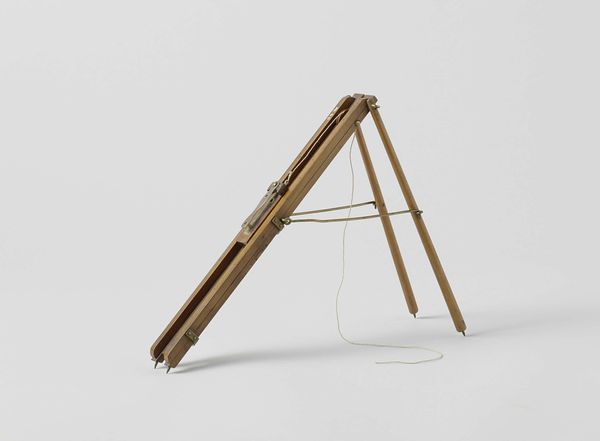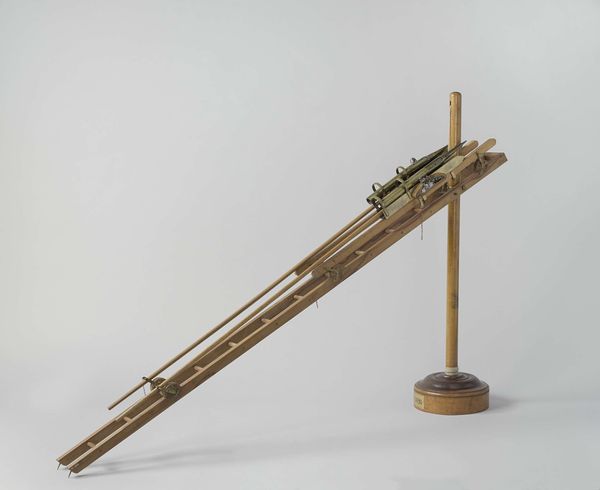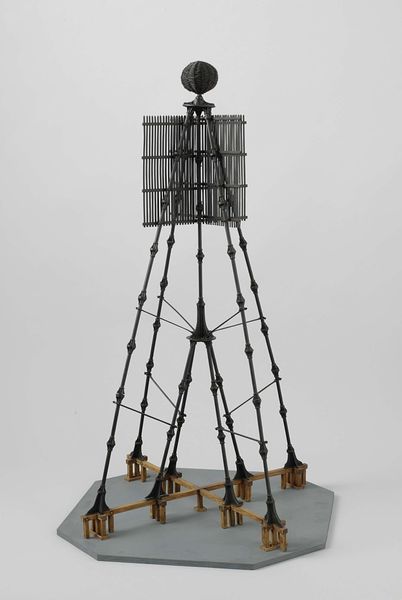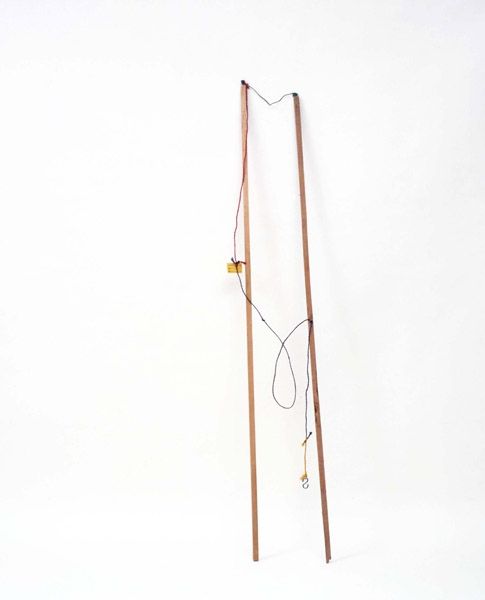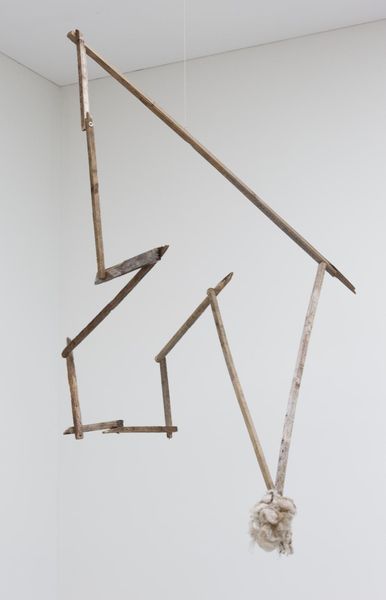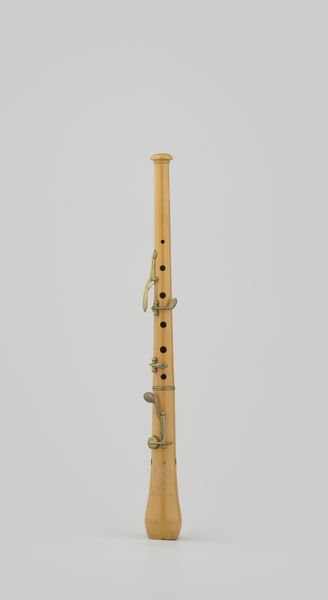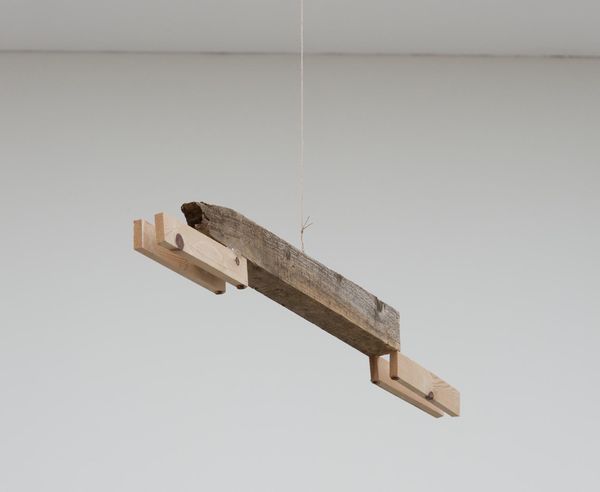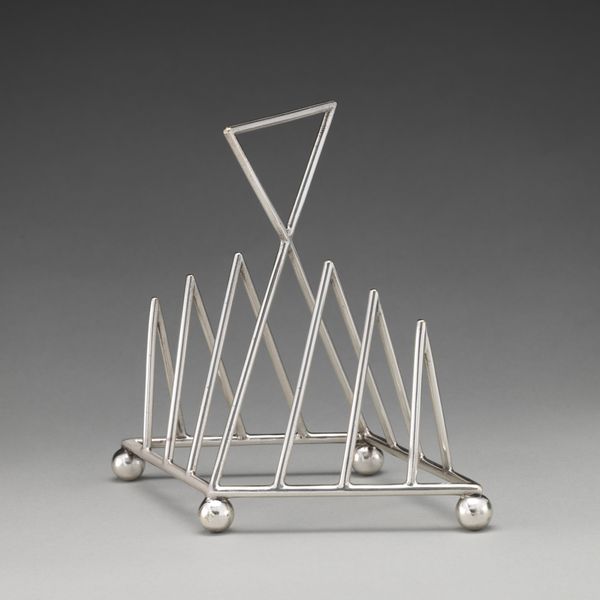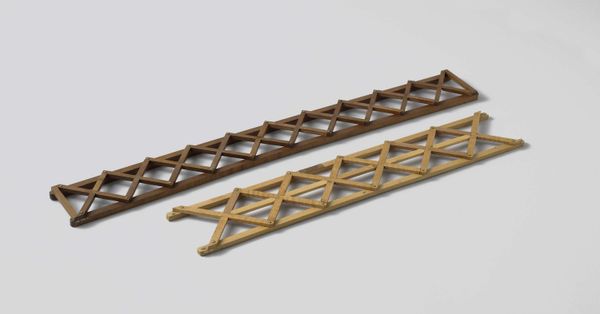
bronze, sculpture, wood
#
round shape
#
circular oval feature
#
neoclassicism
#
rounded shape
#
organic shape
#
shading render
#
bronze
#
3d shape
#
geometric
#
sculpture
#
wood
#
round circular shape
#
history-painting
#
regular shape
#
cut-out
#
cutout
Dimensions: length 54.5 cm, width 6 cm
Copyright: Rijks Museum: Open Domain
Editor: This is a model of two Congreve Rockets with Launching Gear, dating from around 1804 to 1840. It seems to be constructed from bronze and wood. It’s stark, almost elegant, in its simplicity, yet chilling knowing what it represents. What can you tell me about this object? Curator: What strikes me is the deliberate act of crafting a *model* of these weapons. This isn't just about technological advancement; it's about how technology is visualized, disseminated, and ultimately consumed. Think about the labor involved in creating something like this, especially the casting of bronze. What purpose did it serve? Editor: Well, maybe as a demonstration piece? A way to show off the technology to potential investors, perhaps, or to teach military personnel? Curator: Exactly. It highlights how military technology becomes a commodity, marketed and sold. Consider the social context – the rise of industrial warfare and the increasing mechanization of conflict. This model represents a shift in how war is conceived and executed, moving from individual combat to industrialized destruction. What do you think about the choice of bronze, rather than iron, for instance? Editor: Perhaps the bronze emphasizes a kind of perceived prestige or craft? Iron might be more utilitarian, but bronze hints at something beyond mere functionality, making it something other than a strictly functional object. Curator: Precisely! It elevates the technology. And look at the wooden support structure, almost delicate in its construction. It brings to light that a range of people were responsible for the rocket design, manufacture and operation of these materials. By considering each piece we can think about both art and technology and war differently. What’s your take? Editor: I hadn't considered the presentation aspect so fully before – how the model itself plays a role in shaping perceptions of the technology. I see that it's not just about the rockets, but about the *idea* of the rockets, too. Curator: Absolutely. It prompts us to reflect on art's own entanglement within the machinations of material consumption and control.
Comments
No comments
Be the first to comment and join the conversation on the ultimate creative platform.


